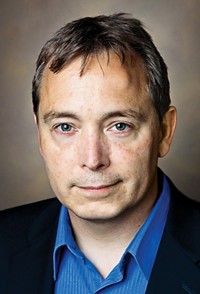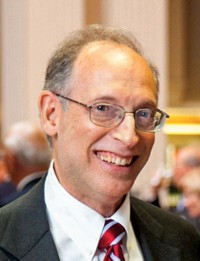Advertisement
Grab your lab coat. Let's get started
Welcome!
Welcome!
Create an account below to get 6 C&EN articles per month, receive newsletters and more - all free.
It seems this is your first time logging in online. Please enter the following information to continue.
As an ACS member you automatically get access to this site. All we need is few more details to create your reading experience.
Not you? Sign in with a different account.
Not you? Sign in with a different account.
ERROR 1
ERROR 1
ERROR 2
ERROR 2
ERROR 2
ERROR 2
ERROR 2
Password and Confirm password must match.
If you have an ACS member number, please enter it here so we can link this account to your membership. (optional)
ERROR 2
ACS values your privacy. By submitting your information, you are gaining access to C&EN and subscribing to our weekly newsletter. We use the information you provide to make your reading experience better, and we will never sell your data to third party members.
People
A Milestone For MEDI
ACS’s Division of Medicinal Chemistry celebrates its 100th anniversary
by Linda Wang
October 19, 2009
| A version of this story appeared in
Volume 87, Issue 42

In 1909, during the 40th American Chemical Society national meeting in Detroit, members of the society’s pharmaceutical chemistry interest section voted unanimously to request that ACS Council establish a Division of Pharmaceutical Chemistry. Today, the Division of Medicinal Chemistry (MEDI) is one of ACS’s largest divisions, with nearly 10,000 members.
The division changed its name in 1920 to the Division of Chemistry of Medicinal Products to reflect its changing membership and the growth of the field of medicinal chemistry. It adopted its current name in 1928.
MEDI’s evolution and its achievements over the past 100 years were the focus of a centennial celebration symposium during the fall ACS national meeting in Washington, D.C. During his opening talk, Patrick M. Woster, secretary of MEDI and a professor of pharmaceutical sciences at Wayne State University, described the early days of the division. “The division at its inception was really not what we think of today as medicinal chemistry,” he says, pointing out that division members were mainly pharmacists or analytical chemists.
Before 1920, drugs were largely isolated from natural sources or used in their natural state. And division programming at the national meetings reflected interests in drug assay methods and formulation improvements, Woster says.
The discovery of penicillin extract by Sir Alexander Fleming in 1928 and advances in synthetic chemistry led to the search for new antibiotics. By 1940, the division’s membership consisted largely of academic and industrial chemists involved in the systematic search for new drugs.
As medicinal chemistry gained visibility within the chemistry community, demand grew for a scientific journal dedicated to the field. In 1959, the Journal of Medicinal & Pharmaceutical Chemistry was created, and in 1962, ACS took over publishing of the journal and renamed it the Journal of Medicinal Chemistry (JMC). Although the journal is not formally linked to the division, the two have always been closely linked.
Joseph G. Cannon, who was chair of MEDI in 1972 and is a professor emeritus at the University of Iowa, says the division has played an important role in raising the profile of medicinal chemists. “I think the heart of the improvement of the view of medicinal chemistry by other branches of chemistry was in large measure due to the growing strength of the Division of Medicinal Chemistry,” he says. “Slowly but surely, we see the organic chemists sneaking into the back of our symposia and listening.”
James R. McCarthy, chair of MEDI and a professor of chemistry and chemical biology at Indiana University-Purdue University, Indianapolis, says it’s important to celebrate the division’s 100th anniversary to highlight the division’s numerous accomplishments.
During the centennial symposium, Philip S. Portoghese, editor of JMC and a professor of medicinal chemistry at the University of Minnesota, discussed advances in research on heteromeric receptors as targets for opioid analgesics; Magid Abou-Gharbia, who retired from Wyeth and is now a professor of medicinal chemistry at Temple University, described strategies for the discovery of small-molecule therapeutics; Garland R. Marshall of Washington University in St. Louis School of Medicine, talked about the practical limitations of preorganization; and former ACS president Paul S. Anderson, now retired from Merck & Co., summarized some important advances in medicinal chemistry.
The division has helped stimulate progress in medicinal chemistry research through its programming at the national meetings, the National Medicinal Chemistry Symposium, held every two years; publication of its Annual Reports in Medicinal Chemistry; and its national awards, such as the Division of Medicinal Chemistry Award. The division established the MEDI Hall of Fame in 2006 to honor scientists who have played key roles in drug discovery and development.
The division has always stressed equal representation by academic and industrial chemists. For example, the division chair alternates between an academic chemist and an industrial chemist. And both the division’s long-range planning committee and its membership consist of roughly equal numbers of academic and industrial chemists.
Jeff Zablocki, program chair for MEDI and a senior director at Gilead Sciences, encourages younger chemists to take an active role in the division by attending long-range planning meetings and suggesting topics for future meeting symposia. His own involvement in the division started roughly seven years ago when he began attending the planning meetings. “I’ve gained a lot through my career as a medicinal chemist,” he says. “It was time to start giving back to the industry.”
MEDI’s centennial celebration is not over. JMC is planning a special centennial issue, which will come out later this year.







Join the conversation
Contact the reporter
Submit a Letter to the Editor for publication
Engage with us on Twitter